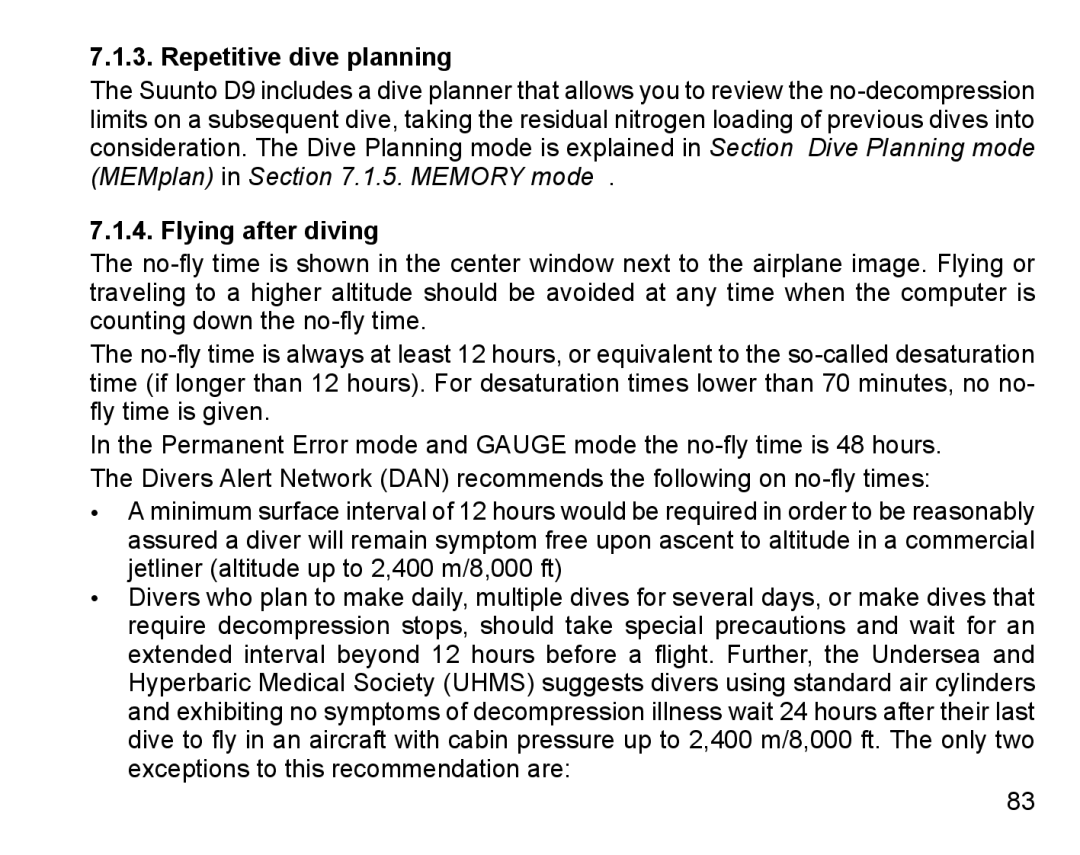7.1.3. Repetitive dive planning
The Suunto D9 includes a dive planner that allows you to review the
7.1.4. Flying after diving
The
The
In the Permanent Error mode and GAUGE mode the
•A minimum surface interval of 12 hours would be required in order to be reasonably assured a diver will remain symptom free upon ascent to altitude in a commercial jetliner (altitude up to 2,400 m/8,000 ft)
•Divers who plan to make daily, multiple dives for several days, or make dives that require decompression stops, should take special precautions and wait for an extended interval beyond 12 hours before a flight. Further, the Undersea and Hyperbaric Medical Society (UHMS) suggests divers using standard air cylinders and exhibiting no symptoms of decompression illness wait 24 hours after their last dive to fly in an aircraft with cabin pressure up to 2,400 m/8,000 ft. The only two exceptions to this recommendation are:
83
